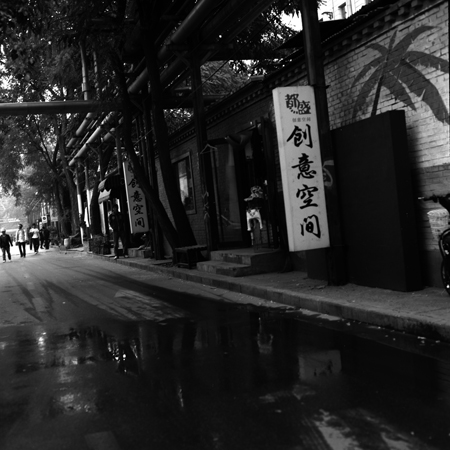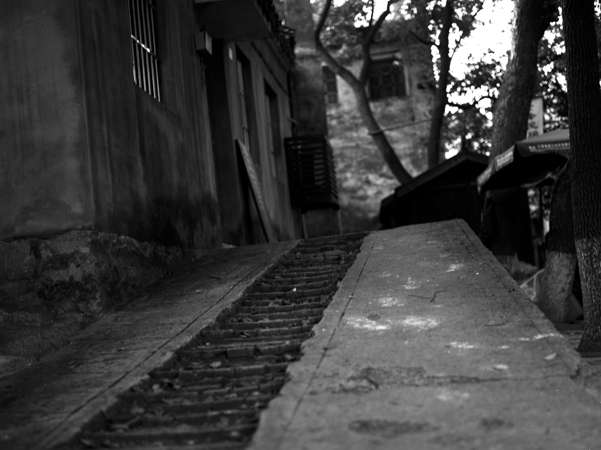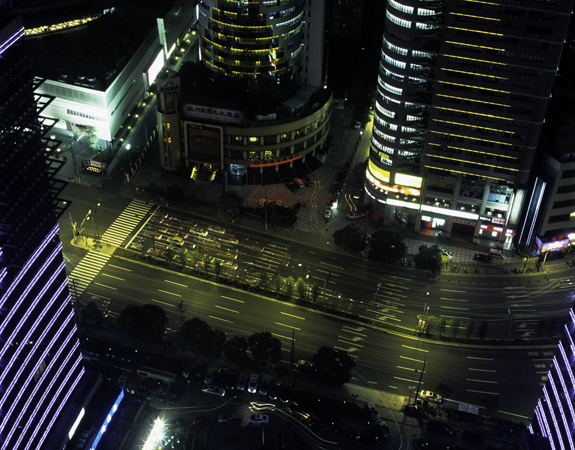One may wonder, if you are not the professional photographer like those who can spend one to six months in one location scouting the angle of light, interesting vistas, interesting people, or subjects that will capture someone’s attention then how can you take great pictures while on a guided tour. There term “Great” will differ between individuals. There is the documentary photograph that proves you were there, reportage of the architecture, the landscape, both rural and urban and the people. Aesthetic qualities are those that have artistic endeavors and/or capture a viewer’s eye. This could always be debated as to which photographs have that quality or not.
In the past three and a half years, I have been on four major trips that were heavily dominated by tours while traveling with a group of friends. This is the story of how I coped with the situation and how I captured images that I like. Not necessarily ones everybody would like.
The four trips are a Tour of China, Fall 2010,; the cruise from Venice to Istanbul and back, Fall 2011; the cruise from Boston to Montreal, Fall 2012; and now the cruise from Singapore to Hong Kong, Feb. 2013.
A decision I had to make is to what camera to bring. In each case, I ended up bringing a DSLR with a 50 mm lens and a medium format film camera with an 80 mm lens. There are some people reading this who would say, “You’re such a chuckle brain. Just bring the digital!”. OK, I love black and white and enjoy shooting with film. You may be right in bringing just one, but I’m a little stubborn when it comes to image capture. The digital is faster to compose and shoot. The film camera I tried to set on a tripod and takes some time.
The China trip started in Beijing and went to Xian, Chengdu, Hong Kong, Guillin, Suzhou, and Shanghai. There were 32 of us on the trip, so we had our own bus. There was a local guide and a national guide. Every day we were on tour.
Great Wall
As I found that it was difficult to set up the tripod when we were on the move. So most of the shots were digital. There were instances when we had the freedom to explore with a fixed time to be back at the bus. That’s when I was able to set up and shoot film. Like a neophyte, this photographer brought ISO 100 film, therefore needing the tripod. This or hold it very still. On top of that, I brought color and BW film.
Since you are always on the move, you have to shoot with whatever light and time of day that you arrive at a location. There is no option to wait for another day when clouds are present or the light less harsh. The trip to the Great Wall was actually a lucky day in regards to pollution. It has rained the night before. This cleared the air. We were given the direction to climb as far to the top of the wall as we could and back to catch the bus at a certain time. I lugged both cameras, tripod and my body up the wall. There were steep inclines on the wall and of course there were elderly women chomping on an apple and prancing like they were walking on level ground. I found a location and shot. Still with the pressure to get back down from the wall on time, I felt rushed.
If you get to Beijing, one of the coolest places is District 798. Kind of a artsy area with coffee shops and art galleries. The building there was an old military installation restructured for the shops. Fascinating area, but of course I was the last to get back to the bus.
Xian is where the Terra Cotta soldier’s museum is located. There is a Buddhist Temple there that is a little commercial, but a place where I found a good digital shot. No time to shoot film here.
Chengdu is where the Pandas live. I was able to go in to shoot the pictures of each of our friends who held the Panda.
Hong Kong was a fun place to visit and I got some shots of the bird merchants in an alley on film. The rest of the visit was captured on digital. Moving too fast.
In Guillin, there are beautiful hills that surround the Li River. The day was a little hazy and the sun very bright. Took a lot of shots in both film and digital, but few very good. We traveled on the river in a boat, so the tripod was set up, but still was the motion of the boat.
In Suzhou we traveled to the village of Tongli which has one of the oldest tea houses in China. The old village was good to photograph while waiting for the group to assemble. Again it was rushed to follow the tour.
Shanghai is a huge city. Most of the shots came from the digital. The only film was shot from the hotel room through the window.
All the pictures above are film scans. That’s it for now. I’ll talk about the Venice-Istanbul next time.






















